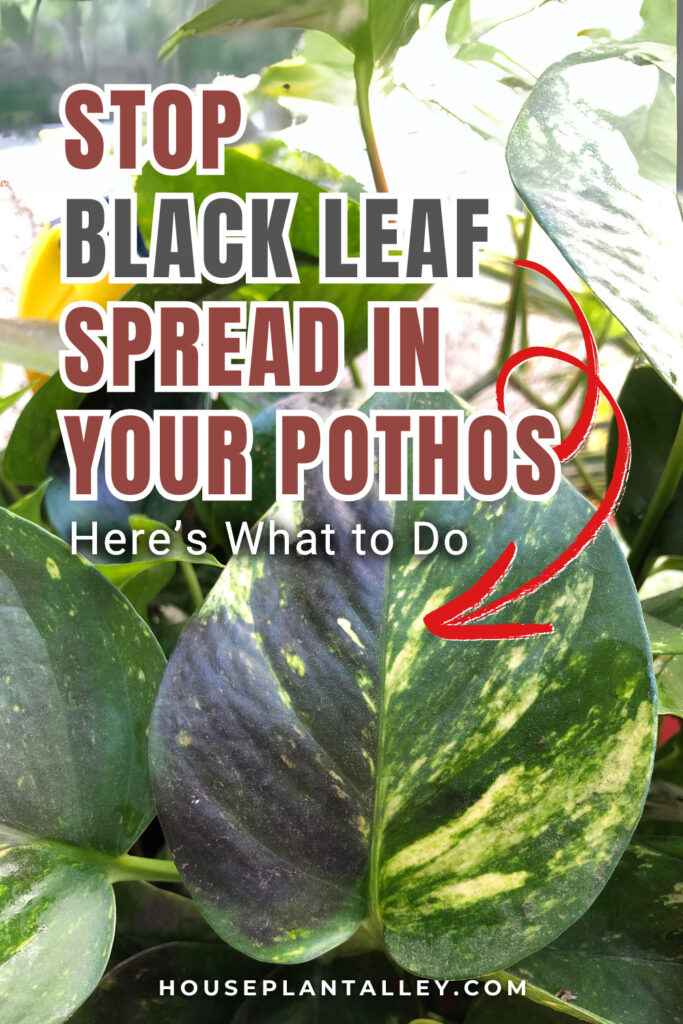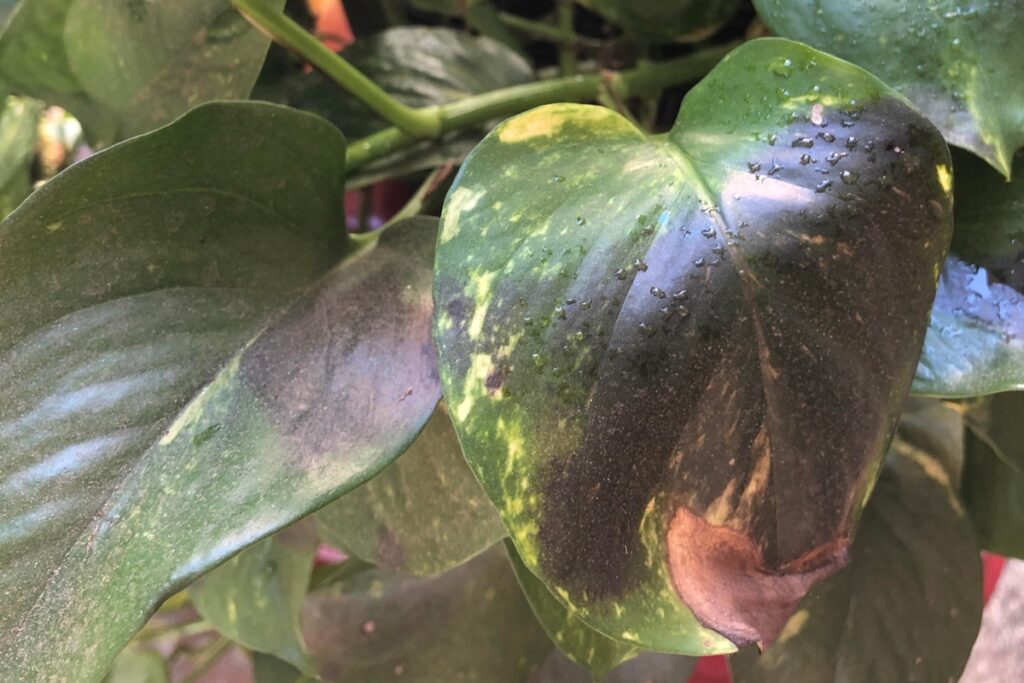Black pothos leaves often catch plant owners off guard, transforming their once-vibrant greenery into a concerning display of darkened foliage. This discoloration typically signals underlying stress factors that demand immediate attention, ranging from watering mishaps to environmental extremes. While some causes prove relatively straightforward to remedy, others require careful detective work to identify the root problem. Understanding these warning signs becomes essential, as the difference between quick intervention and plant loss often comes down to recognizing specific symptoms before irreversible damage occurs.

Contents
Overwatering and Root Rot Problems
When pothos leaves begin their ominous shift from green to black, overwatering often serves as the primary culprit behind this alarming change. Excessive moisture creates a soggy environment where roots suffocate, unable to absorb oxygen properly. This waterlogged condition triggers root rot, a serious fungal infection that spreads quickly through damaged tissue.
Check soil moisture by inserting your finger two inches deep. If it feels wet rather than slightly damp, you’re watering too frequently. Poor drainage compounds the problem, trapping water around vulnerable roots.
Assess root health immediately by gently removing the plant from its container. Healthy roots appear white or cream-colored, while rotted roots turn brown, black, and mushy.
Direct Sunlight Damage and Scorch Marks

While waterlogged roots certainly cause their share of problems, pothos leaves also turn black from an entirely different source of stress. Direct sunlight exposure creates leaf scorch, burning delicate tissue beyond repair. These plants naturally grow under forest canopies, receiving filtered light rather than harsh rays.
Morning sun poses minimal risk, but midday and afternoon sunlight quickly damages leaves. Scorched areas appear brown initially, then progress to black as tissue dies. Unfortunately, burned leaves cannot recover and must be trimmed off.
Position pothos away from south-facing windows or areas receiving direct sunlight exposure throughout the day.
Cold Temperature Stress and Winter Damage
Though sunlight damage creates visible leaf burn, temperature extremes pose an equally serious threat to pothos health. These tropical plants demonstrate significant cold sensitivity, struggling when temperatures drop below 60°F. Exposure to conditions under 50°F causes immediate, visible damage that appears as blackened leaf tissue.
Winter survival becomes challenging near cold windows, drafty areas, or unheated rooms. Unlike other forms of damage, cold-stressed leaves rarely recover once blackened. The affected tissue dies permanently, requiring prompt removal to redirect the plant’s energy toward healthy growth and prevent further complications from spreading damage.
Fertilizer Burn From Excessive Nutrients
Regular fertilization benefits pothos growth, but excessive applications create a dangerous salt buildup in the soil that burns delicate root systems. This fertilizer burn causes leaves to blacken shortly after application, starting from tips and spreading inward. The damage appears within days of overfertilization.
Flush the soil immediately with filtered water, allowing excess to drain completely. This removes concentrated salts before further damage occurs. Future fertilizer application should follow package instructions precisely, typically monthly during growing season.
Maintaining proper nutrient balance prevents burn while supporting healthy growth. Less is always better than too much with pothos feeding.
Pest Infestations and Insect Damage
Could tiny invaders be turning your pothos leaves black when other causes seem unlikely? Sap-sucking insects like aphids, spider mites, and scale can cause yellow, brown, or black spots that eventually lead to leaf death. These pests also produce honeydew, creating sooty mold that darkens leaves further.
Pest identification techniques include checking leaf undersides with a magnifying glass and looking for webbing or sticky residue. Insect control methods start with hand-picking visible pests, followed by weekly treatments using insecticidal soap or neem oil. Quarantine new plants for two weeks to prevent spreading infestations to healthy pothos.
Bacterial and Fungal Disease Issues
Bacterial and fungal infections strike pothos plants when environmental conditions favor pathogen growth, creating the most serious cause of black leaves. These bacterial infections typically develop in overly moist conditions with poor air circulation. Fungal pathogens thrive in similar environments, causing blight that rapidly spreads through stems and foliage.
Infected areas must be removed immediately using sterilized pruning shears. Cut affected stems back to healthy tissue, then dispose of all debris away from plants. Severe infections often require destroying the entire plant to prevent spreading to other houseplants nearby.
Prevention Strategies and Proper Care Techniques
While treating diseased pothos requires urgent action, establishing proper care habits from the start prevents most black leaf problems entirely. Monitor soil moisture by checking the top inch weekly, watering only when slightly dry. Maintain humidity levels between 40-60% using pebble trays or humidifiers. Place plants in bright, indirect light away from direct sun and cold drafts. Keep temperatures consistently above 60°F, ideally 65-75°F. Fertilize monthly during growing season, following package instructions precisely. Inspect leaves regularly for early problem detection. Verify proper drainage with well-draining potting mix. Good airflow around plants reduces disease risk considerably.
